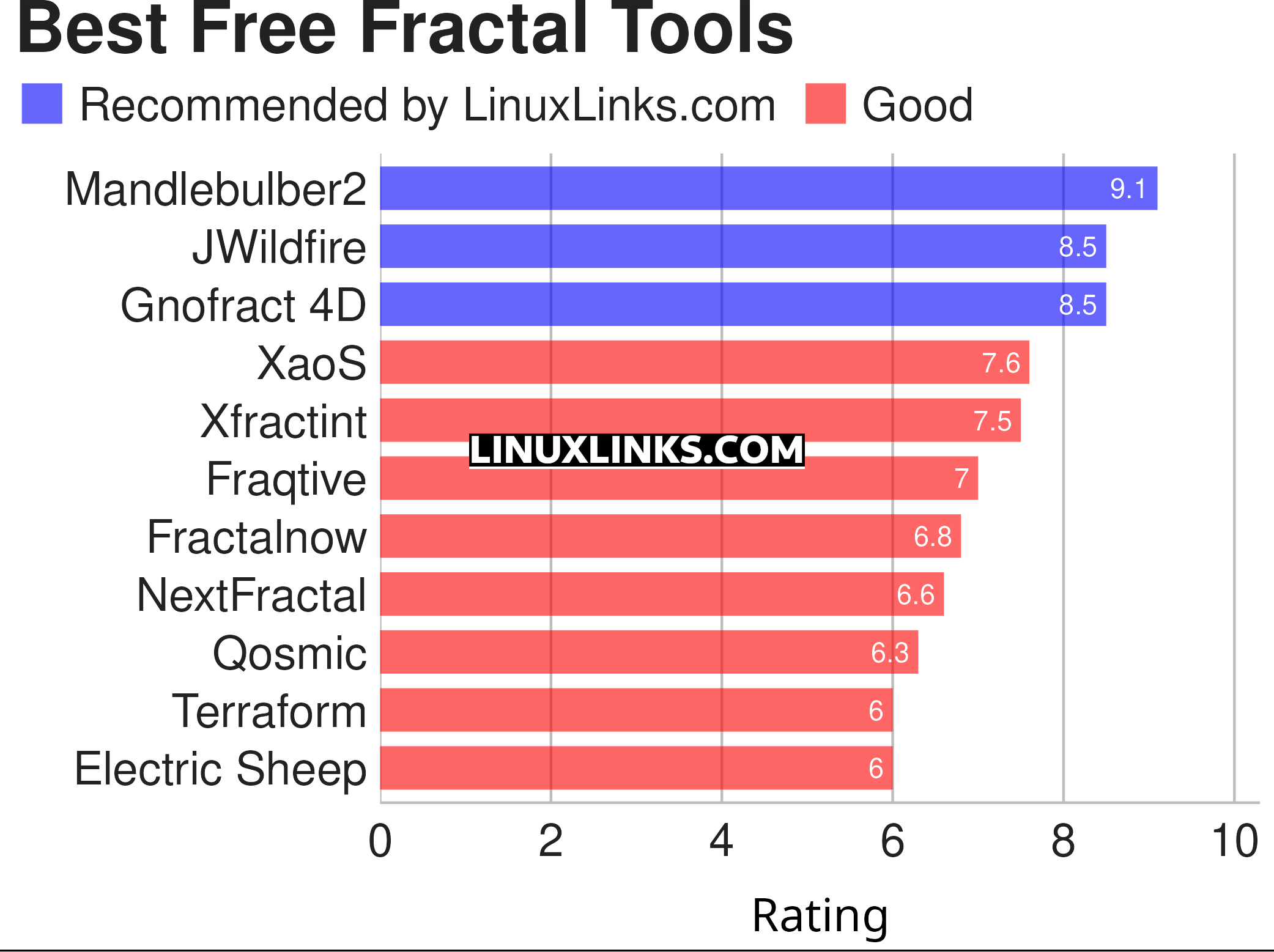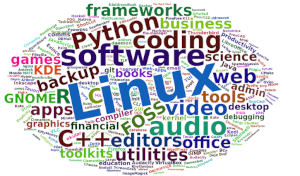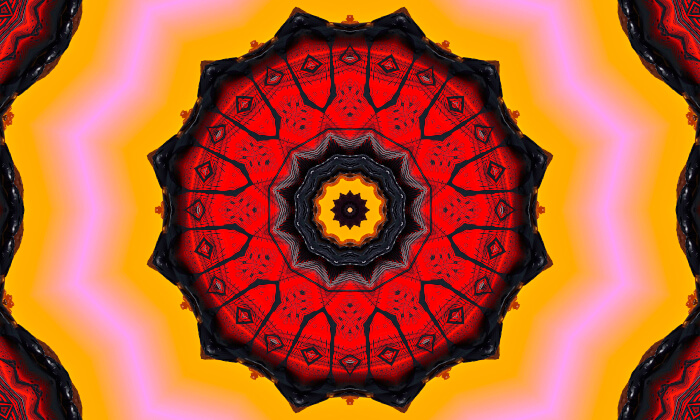A fractal is a geometric shape or quantity which displays self-similarity and non-integer dimension. The property of self-similarity applies where a self-similar object is exactly or approximately similar to a part of itself. If you zoom in on any part of a fractal, you find the same amount of detail as before. It does not simplify.
There are many mathematical structures that are fractals including the Koch snowflake, Peano curve, Sierpinski triangle, Lorenz attractor, and the Mandelbrot set. Fractals also describe many real-world objects, such as crystals, mountain ranges, clouds, river networks, blood vessels, turbulence, and coastlines, that do not correspond to simple geometric shapes.
Fractals are rooted in chaos theory, and because of their nature they are perfect for organic looking artwork and landscapes.
Fractal-generating software is any computer program that generates images of fractals. Linux has a great selection of fractal software to choose from.
To provide an insight into the quality of software that is available, we have compiled a list of 11 absorbing fractal tools. Hopefully, there will be something of interest here for anyone who wants to create their own unique images from computer generated art.
The chart below offers our verdict. Only free and open source software is eligible for inclusion here.

To learn more about each tool including features and screenshots, click the links in the table below.
| Fractal Tools | |
|---|---|
| Mandelbulber v2 | Creatively generate three-dimensional fractals |
| JWildfire | Very powerful and flexible flame fractal generator |
| Gnofract 4D | Four-dimensional, inter-relational Mandelbrot and Julia set generator |
| XaoS | Real-time interactive fractal zoomer |
| Xfractint | Mature fractal generator |
| Fraqtive | Draws Mandelbrot and Julia fractals |
| FractalNow | Offers quick generation of various types of fractals |
| NextFractal | Create amazing fractal images and other algorithmically generated images |
| Qosmic | Cosmic recursive flame fractal editor |
| Terraform | Fully-featured terrain generator using fractal formulae |
| Electric Sheep | Screensaver showing collective dream of sleeping computers |
A special mention is warranted for IFStile, freeware software that builds affine directed graph iterated function system (IFS) in the Euclidean space of arbitrary dimension (as 2D or 3D section).
 Read our complete collection of recommended free and open source software. Our curated compilation covers all categories of software. Read our complete collection of recommended free and open source software. Our curated compilation covers all categories of software. Spotted a useful open source Linux program not covered on our site? Please let us know by completing this form. The software collection forms part of our series of informative articles for Linux enthusiasts. There are hundreds of in-depth reviews, open source alternatives to proprietary software from large corporations like Google, Microsoft, Apple, Adobe, IBM, Cisco, Oracle, and Autodesk. There are also fun things to try, hardware, free programming books and tutorials, and much more. |

This article has been revamped in line with our recent announcement.
Previous comments have been retained.
Hi Steve, What produced the image at the top of this article? Im after something that will “animate” create semi random movement, ie swirling of this sort of image/ongoing transformation.
I’m not certain to be honest, but it would have been one of the applications featured in this article.
I had this exact some thought.
I used to use a program, around 2006, that produced these kind of images but I cannot, for the life of me, remember the name. The style is really distinctive. . .
I think it wasn’t entirely fractal based, but there were a lot of parameters, and it made these beautiful, wispy images,
I’m almost certain that image at the top comes from this program.I’m almost certain I would remember the name if I saw it, and I don’t think it’s any of the ones listed.
I reckon you guys are referring to Dremples.
Apophysis 3D perhaps? The image in this article is very similar to the fractal-flame images created in Apophysis.
The image in this article was definitely not created with Apophysis, software that’s Windows and Mac based. We only use Linux software 🙂